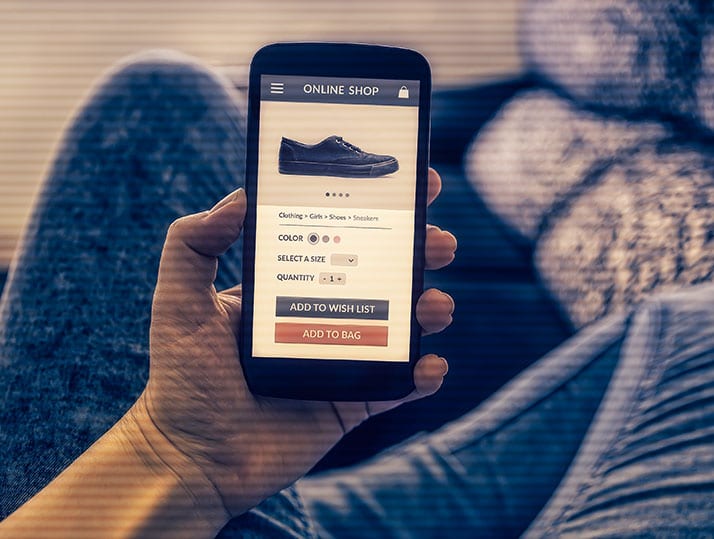Way back in the year 2010, smartphones had only just started gaining popularity, and the first tablets were being unveiled. The stores that were scattered all across the country were regularly filled with motivated shoppers looking to spend some of their hard earned money. Nowadays, this is a sight that is usually only seen during special events like Black Friday with more and more purchases being made without ever stepping foot inside of a retail store.
While this is not necessarily a bad thing, it is worth taking a look at how consumer purchase behavior has shifted over the last decade.
How Consumers Found Companies a Decade Ago
There were a couple of valuable marketing insights known as the first moment of truth and the second moment of truth. These terms were first coined by P&G almost 15 years ago and were groundbreaking concepts when they first emerged. They referred to the process in which a consumer forms opinions regarding which companies they will develop loyalty towards.
In the world of business, brand loyalty is everything and accounts for an average of 65% of the business that a company gets. Therefore, if a company is not able to develop a close enough link to its customers, then its amount of repeat business will sharply decline.
This first moment of truth occurred when a consumer first encounters a product on a store shelf. They would use their senses to analyze the product and then decide whether or not to purchase it. Once they purchased it and brought it home, they would arrive at the second moment of truth which was determined when the consumer used the product and evaluated its effectiveness.
These two moments of truth would combine to form an opinion of the product, and therefore the brand, in the mind of the consumer. They would then use this opinion to judge whether or not they would continue to use the company’s products or not. With the rise of digital technology, these moments of truth no longer exist in this order.
How Consumers Find Companies Today
Although the first and second moments of truth are still more or less relevant, there is now a moment that occurs before either of those begins. It is what Google deemed the zero moment of truth. Instead of the first experience that a consumer has with a product being when they engage with it in a store, it now starts by looking at a screen.

It is estimated that about 81% of all purchases begin with the consumer doing an online search, which is the zero moment of truth. This means that consumers are researching a product before the retailer even knows they are in the market for it, and they have to evaluate it on a picture and information alone. However, convincing a consumer to consider a product based off of only a picture and some basic information is only a small part of the challenge. The bigger struggle is getting the consumer to engage further with the product your company is offering.
When a consumer does an online search, they are using keywords to try and come up with the results that best relate to what they are interested in. The search engine results page is then presented to them with a list of different companies. If someone’s company is near the bottom of that first page of results, or on another page entirely, then it is very unlikely that it will be considered by the consumer. So even before a company has to worry about winning over the loyalty of a consumer, they have to worry about getting in front of a consumer.
How Consumers Decide Which Company to Choose
As previously mentioned, the end goal of a company is to get the consumer to form loyalty to their brand. A significant component of developing loyalty is being able to trust the company. If a consumer feels like they cannot trust a company in any way, then chances are that they will never have loyalty towards them.
Trust is something that exists on a multitude of levels, so much so that even most consumers do not fully understand how they decide whether or not to trust a company. When it comes to doing anything that is at all risky, such as deciding which company to give their business to, consumers tend to rely more on their intuition than anything else. This can make it tricky for companies to figure out how to best display their website, products, and overall company image.
That does not mean that all hope is lost when it comes to knowing how to develop trust between the company and its consumers. It just means that it will likely require a bit of trial and error. Companies should be putting effort into the obvious factors, such as website security certification and detailed return policies, but they should also be paying attention to less obvious factors as well.
While we have all been told as kids not to judge a book by its cover, that is exactly what many consumers are doing. They took a look at a company’s website for a few seconds and might read a couple of lines of text but are mostly just taking in the aesthetics of it before clicking away. So while having descriptive company and product information is important, the font type, background color, and images used tend to be even more critical.
The Consumerism Power Shift
A decade ago, companies had a much stronger influence over whether or not consumers bought their products and services. Simply plastering their name and image everywhere was usually enough to get a lot of sales. However, in the age of digital technology, that power dynamic has shifted, and it is now in the hands of consumers. Showing up with a decent product is no longer enough to win over the hearts of consumers.
Companies now have to be active about engaging with consumers and finding out what it is that they want to see in a company and product. They should then do their best to reflect those desires in their operations. Consumers are also becoming more able to assess whether or not a company cares about its customers or what it is doing. Therefore, a company cannot be trying to fake passion because consumers will see right through that.
Overcoming this may require making changes to a company’s staff, culture, and brand that can be reinforced by the majority of employees portraying passion around what they do. When an employee is miserable at their job, then it is bound to show up in the work they do. Once that work is put out into a product for consumers to see, they will be able to sense that lack of passion, and it will hurt a company’s chances of getting the sale. So in many ways, earning the business of consumers starts with developing a healthy workplace where employees are happy and have a passion for what they do.
The world of consumerism is an ever-changing one, and just like it has changed over the last decade, it will continue to do so in years to come. If you have questions or need help positioning your product or business, please contact Glint by emailing us at agency@glintadv.com or better yet, give us a call at 817-616-0320.







